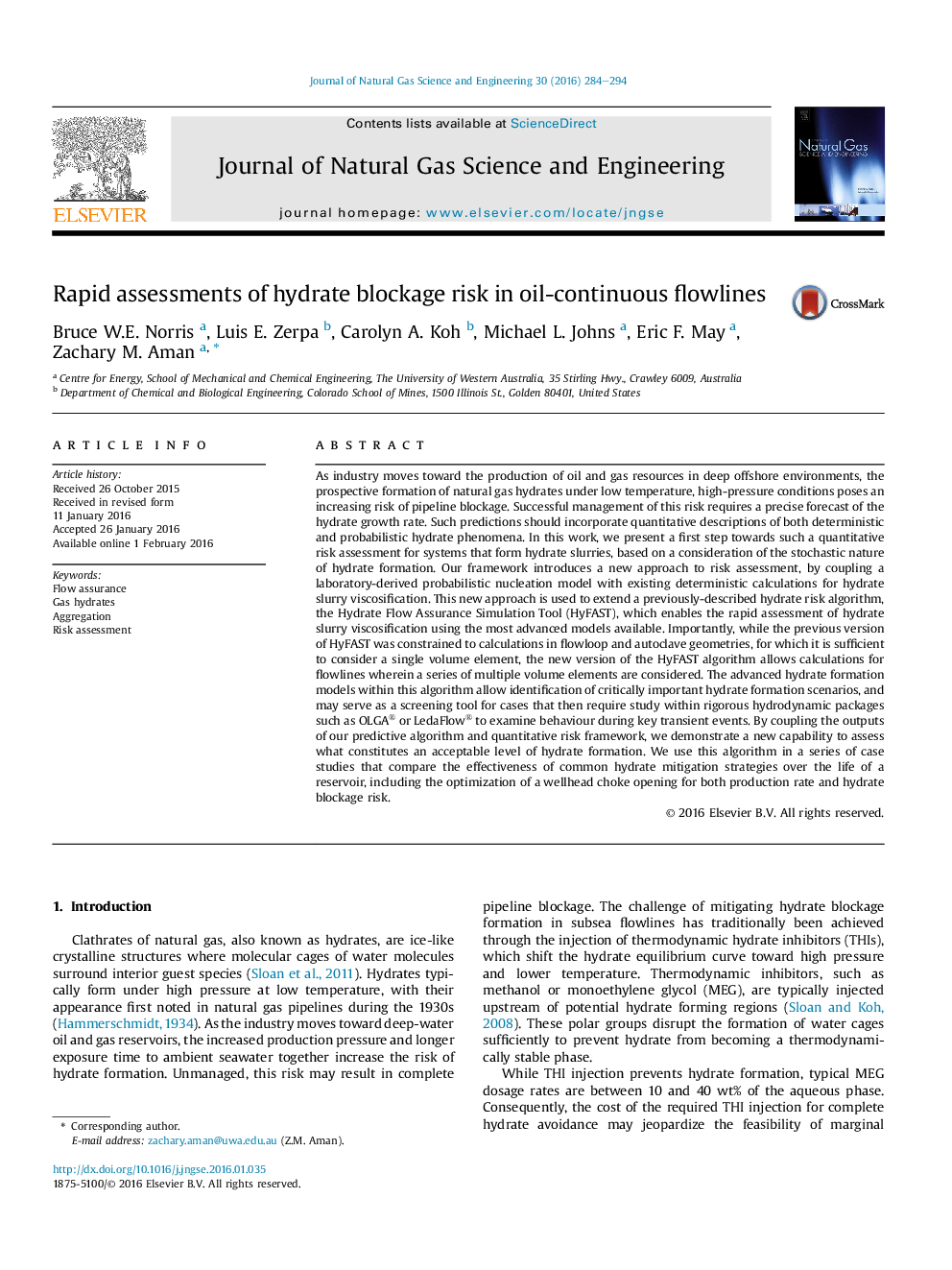| کد مقاله | کد نشریه | سال انتشار | مقاله انگلیسی | نسخه تمام متن |
|---|---|---|---|---|
| 1757173 | 1523011 | 2016 | 11 صفحه PDF | دانلود رایگان |
• New model and calculation strategy to assess hydrate risk in subsea systems.
• Oil-dominant mode validated against flowloop data.
• Novel risk assessment achieved by integrating probabilistic variables.
As industry moves toward the production of oil and gas resources in deep offshore environments, the prospective formation of natural gas hydrates under low temperature, high-pressure conditions poses an increasing risk of pipeline blockage. Successful management of this risk requires a precise forecast of the hydrate growth rate. Such predictions should incorporate quantitative descriptions of both deterministic and probabilistic hydrate phenomena. In this work, we present a first step towards such a quantitative risk assessment for systems that form hydrate slurries, based on a consideration of the stochastic nature of hydrate formation. Our framework introduces a new approach to risk assessment, by coupling a laboratory-derived probabilistic nucleation model with existing deterministic calculations for hydrate slurry viscosification. This new approach is used to extend a previously-described hydrate risk algorithm, the Hydrate Flow Assurance Simulation Tool (HyFAST), which enables the rapid assessment of hydrate slurry viscosification using the most advanced models available. Importantly, while the previous version of HyFAST was constrained to calculations in flowloop and autoclave geometries, for which it is sufficient to consider a single volume element, the new version of the HyFAST algorithm allows calculations for flowlines wherein a series of multiple volume elements are considered. The advanced hydrate formation models within this algorithm allow identification of critically important hydrate formation scenarios, and may serve as a screening tool for cases that then require study within rigorous hydrodynamic packages such as OLGA® or LedaFlow® to examine behaviour during key transient events. By coupling the outputs of our predictive algorithm and quantitative risk framework, we demonstrate a new capability to assess what constitutes an acceptable level of hydrate formation. We use this algorithm in a series of case studies that compare the effectiveness of common hydrate mitigation strategies over the life of a reservoir, including the optimization of a wellhead choke opening for both production rate and hydrate blockage risk.
Journal: Journal of Natural Gas Science and Engineering - Volume 30, March 2016, Pages 284–294
